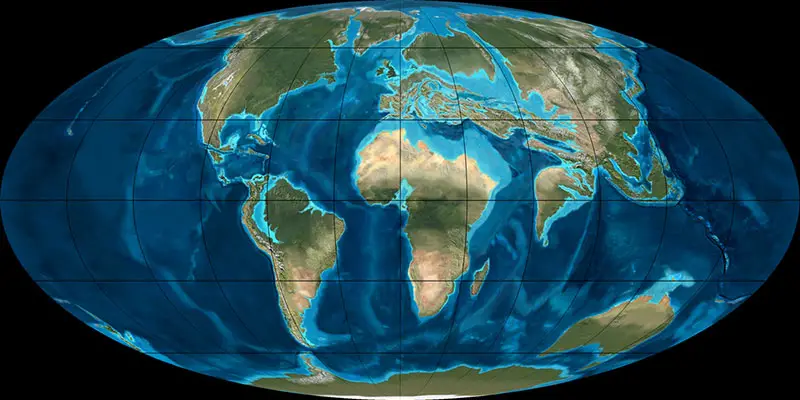†Asiomomys (Omomyidae)
Asiomomys ist eine Primatengattung innerhalb der Familie Omomyidae, deren 2 Mitglieder ab dem frühen Paläogen (Eozän) im Lutetium lebten, das vor ungefähr 47,8 Millionen Jahren begann und bis vor 41,3 Millionen Jahren andauerte. Viele Überreste wurden in China gefunden.
Asiomomys ist der Gattungsname einer Primatenart aus der Familie Omomyidae, Unterfamilie Omomyinae, die im Eozän in China lebte.
Asiomomys changbaicus
Das Typusexemplar mit der Bezeichnung IVPP V 8802 ist ein Unterkiefer mit rechten Gebissfragmenten. Erhalten ist die zerbrochene Krone des dritten Prämolaren (P3), Alveoli für P4-M1 und die Kronen der Backenzähne M2-3. Der Fund stammt aus dem III Member der Huadian Formation (Jilin, China) und ist zwischen 48,6 und 40,4 Millionen Jahre alt. Er wird am Institute of Vertebrate Paleontology and Paleoanthropology, Chinese Academy of Sciences aufbewahrt.
| Sammlung | Kommentar zum Fundort | Epoche, Alter | Geologie, Formation | Kommentar zur Sammlung |
|---|---|---|---|---|
| Gonglantou Oil Shale Mine | Huadian | IVPP 85006; Huadian; Gonglangtou | ||
| Kommentar z. Stratigraphie | Lithographie | Museum | Kommentar z. Taxonomie | |
| "correlative with the latter part of the Uintan" or even younger based on mammalian stage of evolution (Beard and Wang 1991) or Middle Eocene based on "close resemblance between the fish fauna" and that of the Green River Formation, which is mostly Wasatchian and Bridgerian but ranges into the Duchesnean (Hou and Ericson 2002); Lutetian seems like the best compromise because it spans most or all of the Bridgerian and Uintan | "oil shale and coal deposits" (Hou and Ericson 2002) | IVPP | formation has also yielded "fossil fish, reptiles, and birds" plus "gastropods and pollen": full list given by Wang and Li 1990 |
| Physiologie | |
|---|---|
| Gewicht: | ? |
| Schwestertaxa | |
